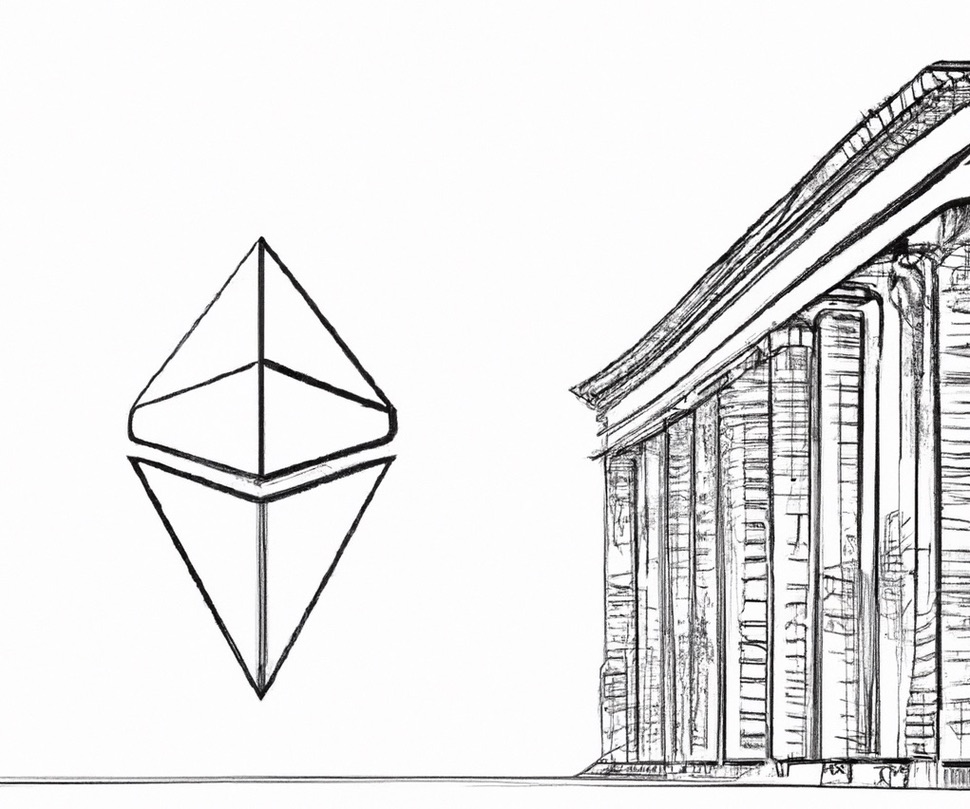Navigating the complex world of cryptocurrencies can be both exciting and challenging. As the crypto market matures, investors and regulators grapple with understanding the vital differences between securities and commodities in this rapidly expanding digital landscape. Are you ready to embark on a fascinating journey to unlock the secrets of security vs commodity in the crypto market? Prepare to delve into the intricate world of crypto regulation and uncover the impact these classifications have on your investment strategies.
In this comprehensive guide, we will explore the definitions of securities and commodities in the crypto market, the roles of regulatory bodies like the SEC and CFTC, and the repercussions of classification on crypto investments. Through real-life case studies of Ethereum and XRP, we will demonstrate the ongoing debate surrounding the classification of cryptocurrencies, and provide invaluable insights on navigating the complex regulatory landscape to optimize your crypto portfolio.
Short Summary
- Understanding the distinction between securities and commodities in crypto markets is essential for navigating taxation, regulation, and investment strategies.
- Regulatory bodies such as the SEC and CFTC play an important role in promoting fairness, safety,and compliance by regulating securities derivatives & commodities.
- Investors must stay informed on regulatory implications to optimize investments through project evaluation & portfolio diversification.
Understanding Securities and Commodities in Crypto

The crypto market has experienced tremendous growth, drawing the attention of both individual and institutional investors. However, understanding the critical distinctions between securities and commodities in the crypto market is of utmost importance, as it directly affects taxation, regulation, and investment strategies. But what exactly are securities and commodities in the realm of cryptocurrencies?
The Securities Act of 1933 prohibits the sale or offer of securities in the U.S. unless registered with the SEC or exempt from registration. The definition of “security” is flexible, as established by the Supreme Court (SCOTUS) in the SEC v. W. J. Howey Co. case in 1946, emphasizing economic realities and purposes over the form of transactions. This led to the creation of the “Howey test” which determines an investment as a security based on specific criteria: an investment of money, in a common enterprise, expecting profits primarily from others’ efforts. The term “instrument” frequently appears in securities discussions, but isn’t clearly defined in the Securities or Exchange Acts. Black’s Law Dictionary and the Cornell Law School Legal Information Institute provide related definitions, emphasizing a written legal document recording enforceable acts or agreements. In essence, securities law dictates that a security must have both an issuer and a written instrument evidencing an agreement. The Howey test’s “investment of money” aspect focuses on financial risk, with even non-monetary contributions like cryptocurrencies potentially satisfying this requirement. For the “common enterprise” criterion, federal courts differ in their interpretations but agree on some form of investor interdependency or correlation with the promoter’s success. We discuss this test and how it applies to crypto tokens and/or protocol in the work we published on Digital Asset Securities, titled the Intersection of Digital Assets and Securities Laws: Understanding the Mechanics
Securities in the crypto market are digital tokens representing ownership in a project or asset, subject to strict regulations and oversight from bodies like the SEC. These tokens often undergo the Howey test to determine their classification as securities, based on criteria such as:
- Investment of money
- Common enterprise
- Expectation of profit
- Profit derived from the efforts of others.
On the other hand, commodities in the crypto market are digital tokens representing physical assets, such as metals or real estate, and are subject to distinct regulations than those applicable to securities. Both securities and commodities are types of digital assets in the crypto market, but their classification plays a crucial role in shaping the overall industry.
Defining Securities in Crypto
In the ever-evolving world of cryptocurrencies, securities are digital tokens that signify ownership in a project or asset, often issued through initial coin offerings (ICOs). Crypto tokens, specifically security tokens, are subject to stringent regulations, including registration, disclosure, and anti-fraud provisions enforced by the SEC. The classification of most cryptocurrencies as securities is primarily based on their nature as investments in a common enterprise with the expectation of profits from the efforts of others, as per the SEC’s application of the Howey test.
However, the SEC does not consider all cryptocurrencies to be securities. For instance, Bitcoin, a decentralized cryptocurrency without a central issuer, is exempted from this classification. Nevertheless, the regulatory landscape for securities in the crypto market remains complex, with compliance posing challenges for both investors and crypto companies.
Defining Commodities in Crypto
Unlike securities, commodities in the crypto world are digital tokens that represent physical assets, such as valuable metals, oil, or real estate. These tokens enable investors to partake in the ownership of physical items without having direct possession. They provide fractional ownership and facilitate convenient transferability, offering a digital representation of ownership that does not necessitate direct physical possession.
The regulations for commodities in the crypto market can vary depending on the location, and typically include measures to prevent money laundering and comply with Know-Your-Customer (KYC) regulations. It is essential to be aware of these distinctions and the regulations governing each type of crypto asset, such as the Commodity Exchange Act, as the classification of a cryptocurrency as a security or commodity can greatly impact its investment potential and the overall industry landscape.
Regulatory Bodies and Their Roles

As the crypto market continues to expand, regulatory bodies play a significant role in ensuring fairness, safety, and compliance. The Securities and Exchange Commission (SEC) and the Commodity Futures Trading Commission (CFTC) are two primary regulatory bodies with differing focuses and approaches to the crypto market.
The SEC is primarily concerned with the regulation of securities, enforcing strict regulations on assets such as security tokens. In contrast, the CFTC focuses on the regulation of derivatives and commodities within the crypto market sphere.
Understanding the roles of these regulatory bodies and their respective approaches to crypto assets, including decentralized autonomous organizations, is crucial for investors looking to navigate the complex regulatory landscape.
The SEC’s Approach to Crypto Regulation
The SEC’s approach to crypto regulation primarily considers most cryptocurrencies as securities, with the exception of Bitcoin. This classification is based on the Howey test, which assesses whether a crypto asset meets the criteria of an investment contract, such as:
- Investment of money
- Common enterprise
- Expectation of profit
- Profit derived from the efforts of others
As a result, the SEC enforces strict regulations on cryptocurrencies, including registration, disclosure, and anti-fraud provisions.
This cautious approach towards the classification of cryptocurrencies highlights the importance of understanding the regulatory implications for investors and crypto companies alike. Navigating this complex regulatory landscape requires a clear understanding of the differences between securities and commodities, and the possible consequences of misclassification.
The CFTC’s Involvement in Crypto Markets
On the other hand, the CFTC takes a different approach to crypto regulation. It may classify certain cryptocurrencies like Ethereum as commodities, leading to a more lenient regulatory approach. The CFTC is responsible for:
- Regulating derivatives and commodities within the crypto market sphere
- Upholding general anti-fraud and manipulation enforcement authority
- Supervising futures exchanges that offer crypto trading.
This divergence in regulatory approaches between the SEC and CFTC highlights the importance of understanding the classification of cryptocurrencies as securities or commodities. Investors must thoroughly examine each asset and the regulatory landscape surrounding it to make informed decisions and mitigate potential risks.
The Impact of Classification on Crypto Investments

The classification of a cryptocurrency as a security or commodity can have a significant impact on its investment potential. Securities in crypto face challenges such as compliance with securities laws, investor protection, and disclosure requirements, which can limit their investment potential. On the other hand, commodities in crypto offer opportunities for investors to gain exposure to physical assets without owning or storing them, providing potential hedging benefits.
As the crypto market continues to evolve, it is crucial for investors to understand the differences between securities and commodities and the implications of their classification on investment opportunities. By doing so, investors can make informed decisions and optimize their portfolios to capitalize on the unique characteristics of each asset class.
Challenges for Securities in Crypto
Securities in crypto face numerous regulatory obstacles, such as adhering to investor safety, anti-fraud protocols, and disclosure mandates. These challenges can restrict their investment potential and create uncertainty for both investors and crypto companies. The classification of crypto assets as securities may also lead to delays in consumer protection regulations related to cryptocurrency, complexity in taxing crypto assets, and instability and speculation associated with crypto asset securities.
Furthermore, the difficulty in precisely classifying existing cryptocurrencies for regulatory purposes and identity confirmation for the issuance and transfer of securities on traditional blockchains poses additional challenges. As a result, investors must carefully consider the potential risks and regulatory implications associated with securities in the crypto market, as well as the broader crypto industry.
Opportunities for Commodities in Crypto
In contrast, commodities in the crypto market present potential opportunities for investors. By investing in commodity tokens, individuals can:
- Gain exposure to the price movements of physical assets without owning or storing them
- Benefit from potential hedging against market fluctuations
- Diversify their investment portfolios.
Commodities in the crypto market offer several advantages for investors.
- They benefit from fewer regulatory restrictions than securities.
- They provide unique opportunities in the crypto asset class.
- Understanding the potential opportunities and risks associated with commodities in the crypto market is essential for optimizing portfolios.
Case Studies: Ethereum and XRP

Ethereum and XRP serve as case studies for the ongoing debate surrounding the classification of cryptocurrencies as securities or commodities, with each facing different regulatory challenges. Ethereum, a decentralized platform that enables developers to create and execute decentralized applications, and XRP, a digital asset used to facilitate international payments, highlight the complexities of the crypto market and the importance of understanding regulatory implications.
Through these case studies, we will examine the challenges and opportunities presented by the classification of cryptocurrencies and the potential impact on their investment potential. By understanding the regulatory landscape surrounding Ethereum and XRP, investors can gain valuable insights into the broader crypto market and make informed decisions about their investments.
Ethereum: Commodity or Security?
Ethereum’s classification as a commodity or security remains uncertain, with the CFTC’s stance contradicting the SEC’s approach, potentially impacting its future investment potential. In a recent court filing, the CFTC declared Ethereum, alongside Bitcoin and Tether, to be commodities, conflicting with the SEC’s more prudent stance toward the classification of Ethereum as a security.
This ongoing debate and uncertainty surrounding Ethereum’s classification highlight the importance of understanding the regulatory landscape for cryptocurrencies. Investors must carefully consider the potential risks and opportunities associated with Ethereum, as its classification as a commodity or security could have a noteworthy effect on its future investment prospects.
XRP: A Cautionary Tale
XRP’s lawsuit and subsequent delisting from major exchanges serve as a cautionary tale for other cryptocurrencies that may be considered securities, highlighting the importance of understanding regulatory implications. The ongoing legal dispute with the U.S. Securities and Exchange Commission regarding the classification of XRP has led to major exchanges like Coinbase and Kraken suspending the trading of XRP due to potential compliance concerns.
This case study underscores the potential consequences of misclassification and the need for investors to be aware of the regulatory landscape surrounding cryptocurrencies. By understanding the challenges and opportunities presented by the classification of cryptocurrencies like XRP, investors can make more informed decisions and mitigate potential risks associated with their investments.
Navigating the Complex Regulatory Landscape

Navigating the complex regulatory landscape of crypto requires investors to:
- Carefully evaluate projects
- Understand the differences between securities and commodities
- Diversify their portfolios to mitigate risks associated with potential regulatory changes
As the debate surrounding the classification of cryptocurrencies and initial coin offerings continues, being well-informed and prepared is essential for investors seeking to optimize their crypto investments.
In this section, we will provide guidance on:
- Evaluating crypto projects
- Understanding the differences between securities and commodities
- Diversifying your portfolio to capitalize on the unique characteristics of each asset class
By adopting these strategies and staying updated on the Responsible Financial Innovation Act, investors can expect profits solely by confidently navigating the complex regulatory landscape and making informed decisions about their investments.
Evaluating Crypto Projects
When evaluating a crypto project, it is essential to thoroughly examine its white paper and assess the team behind the project. Reading the white paper attentively and understanding the project’s aims and objectives can provide valuable insights into the project’s potential. Additionally, evaluating the assertions of the white paper by considering evidence to support the claims, such as data, research, and analysis, can help investors make informed decisions about the project.
It is also important to evaluate competitors by considering the similarities and differences between the projects, such as their technology, team, and partnerships. Assessing the team responsible for the project by taking into account their experience, qualifications, and track record can provide further confidence in the project’s potential success.
Diversifying Your Crypto Portfolio
Diversifying your crypto portfolio is an important strategy for mitigating risk and amplifying returns. By investing in a mix of securities and commodities, investors can capitalize on the unique opportunities presented by each asset class and minimize potential losses due to market fluctuations or regulatory changes.
Investors can diversify their crypto portfolio by investing in both securities and commodities, such as Bitcoin and Ethereum. Understanding the potential risks and opportunities associated with each asset class and staying informed about the regulatory landscape is essential for optimizing your investment strategy and navigating the complex world of cryptocurrencies.
Summary
In conclusion, understanding the differences between securities and commodities in the crypto market is essential for investors and regulators alike, as it impacts taxation, regulation, and investment strategies. With regulatory bodies like the SEC and CFTC playing significant roles in ensuring fairness, safety, and compliance in the crypto market, investors must be aware of the potential risks and opportunities associated with each asset class.
By carefully evaluating crypto projects, understanding the differences between securities and commodities, and diversifying your portfolio, you can confidently navigate the complex regulatory landscape of cryptocurrencies and optimize your investment strategy. The crypto market is constantly evolving, and staying well-informed and prepared is key to your success as an investor in this exciting and dynamic space.
Frequently Asked Questions
Is Bitcoin a commodity or a security?
The CFTC and SEC have agreed that Bitcoin is a commodity under the Commodity Exchange Act, as it functions as a medium of exchange, a unit of account and a store of value, with no central entity that benefits from its growth.
Bitcoin is thus uniquely exempt from counterparty risk.
Can something be a commodity and a security?
Yes, something can indeed be both a commodity and a security, as commodities aren’t limited to physical items such as wheat or oats, but include all futures contracts.
Is XRP a security or commodity?
Thursday’s court ruling on Ripple’s case with the SEC found XRP to be a commodity when sold to the general public on exchanges, and a security when sold directly to institutional investors.
This news was well-received within the crypto industry, leading to exchanges relisting XRP.
What is the difference between securities and commodities in the crypto market?
Securities in the crypto market are digital tokens representing ownership and are subject to strict regulations, while commodities are digital tokens representing physical assets and subject to different regulations.
What roles do the SEC and CFTC play in the crypto market?
The SEC regulates securities and the CFTC regulates commodities and derivatives in the crypto market, playing important roles in its regulation.



